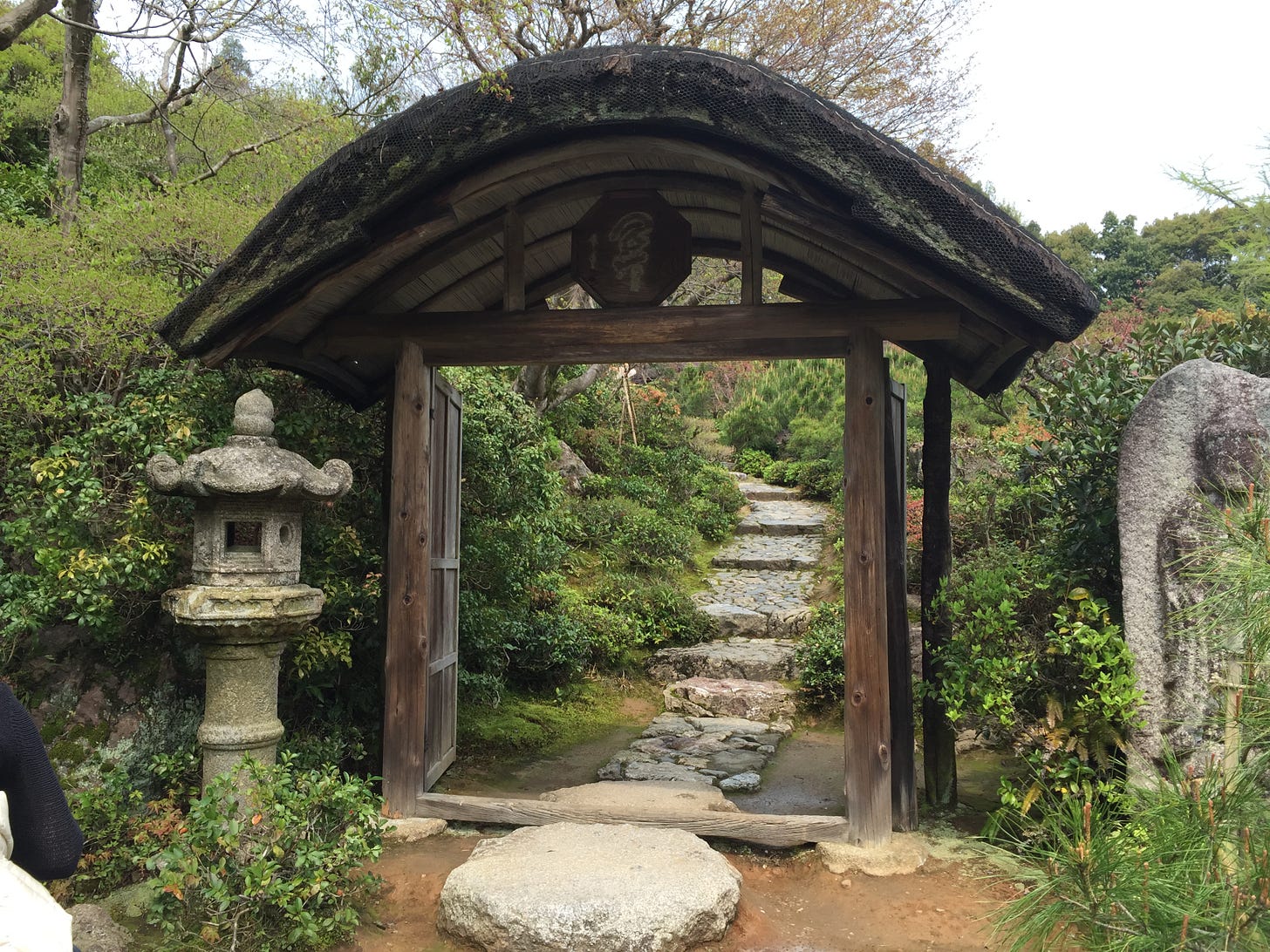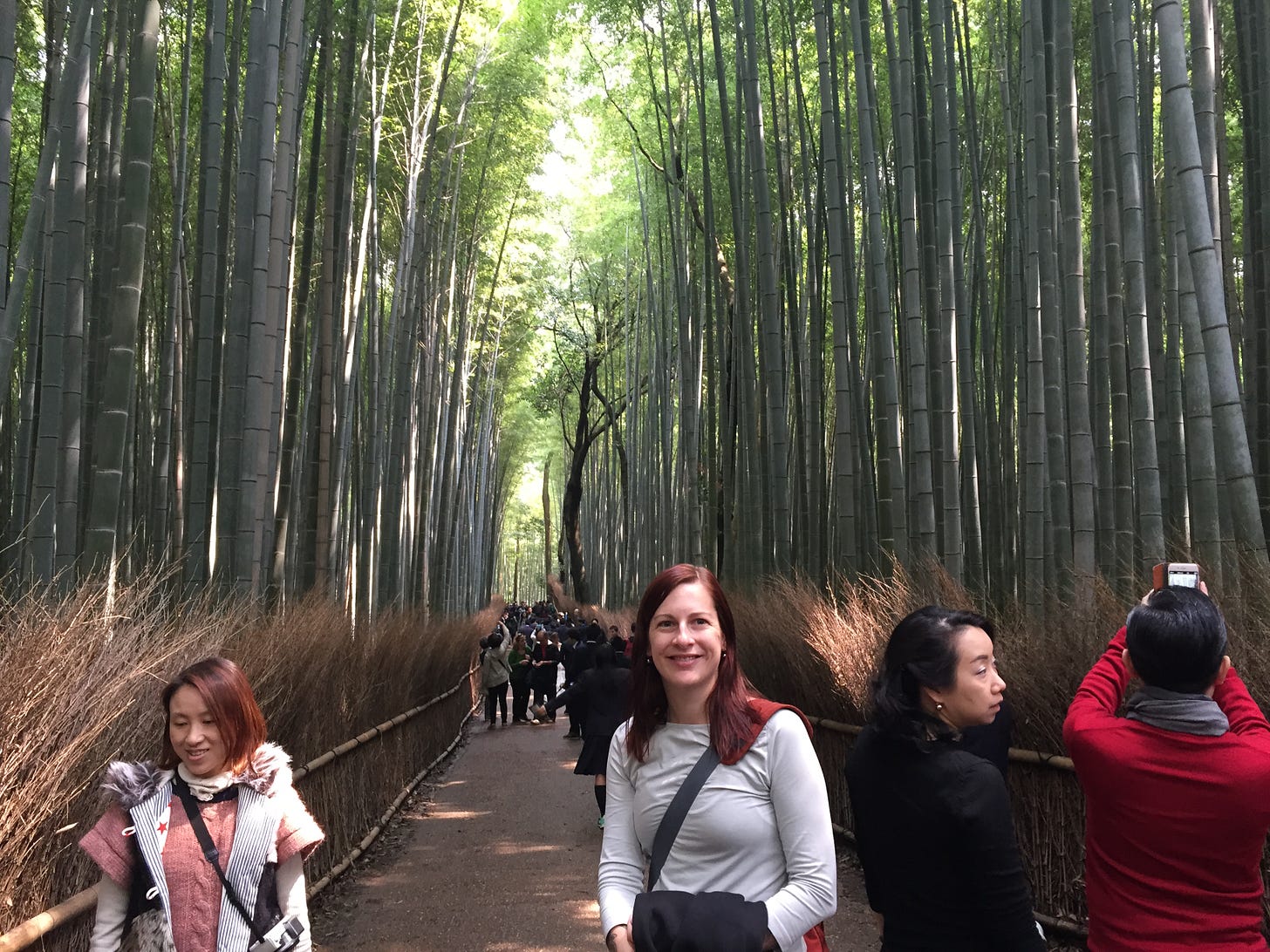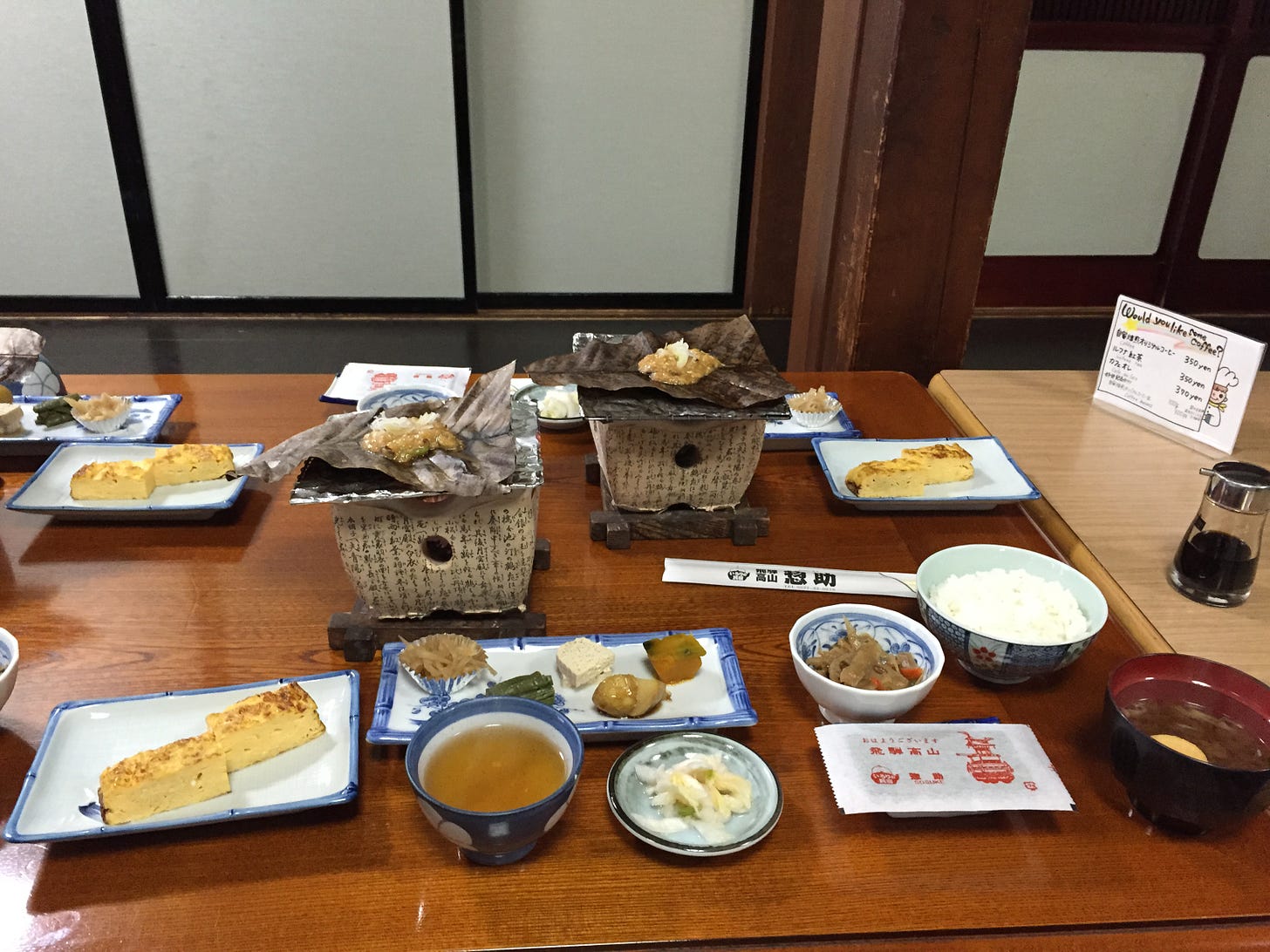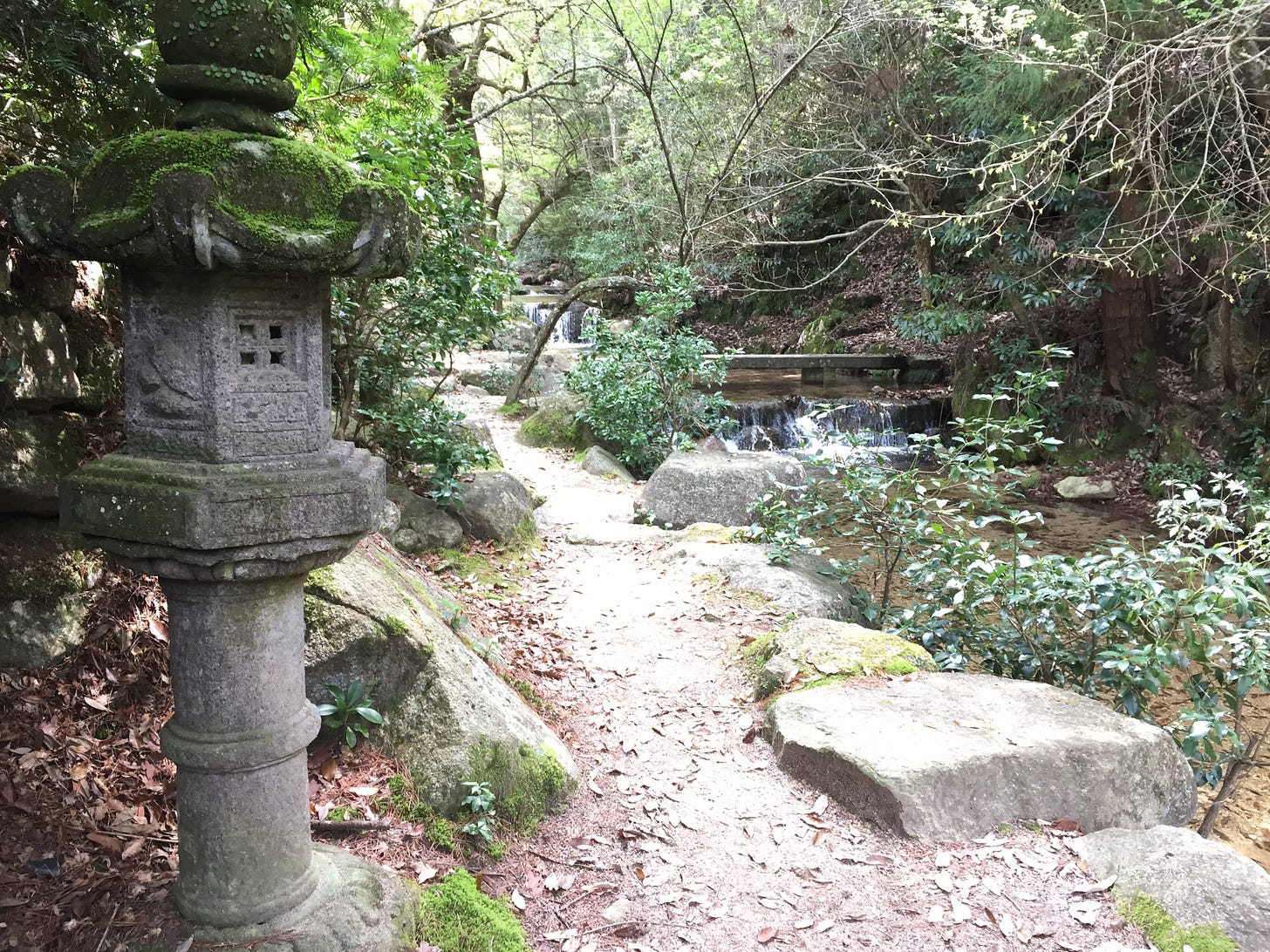Time Makes the Miso: Japanese inspired life lessons on the power of patience
A series on patience inspired by cultural wisdom from around the world.
From my latest interview with , bestselling author of the book Wabi Sabi: Japanese wisdom for a perfectly imperfect life, and five other amazing non-fiction books, I ended up with a page full of notes. One that struck me profoundly was her story around the quote: Time makes the miso.
Beth noted, ‘things take time, and we get better at our art with time. Japan taught me not to rush – just to keep going, keep building, one day at a time, one word at a time.’
I highlighted this really feeling the push in the world today, the desire for instant results and to keep up with things. My recorded article ‘Rejecting Superwoman’ discusses this ability to do so much in today's world, in that I can do it all, but I don’t want to do it ALL. The challenge has been stepping away from some good things to keep focused on a few things I want to be great at, knowing each new thing divides my time further. Yet even with this gentle reminder, I feel a pressure to do each thing at the level of expert.
The art of patience is a skill I want to highlight boldly to myself as I navigate slow growth in my writing life. The slow growth is hard because writing feels like precisely what I can and want to do, but it is something I have to fit amongst the working hours, parenting little ones, and now face reduced time as we look to move house.
Whilst I have always written for myself, I began sharing my writing online in 2014. This ten-year anniversary has bubbled up the slowness of my growth because I don’t feel like I am much further along. Along with what, I don’t know, I guess the dream of doing what I love as my job, so it has more than the scraps of time left over. Don’t get me wrong, I am grateful I have the ability and time to do some writing, but I acknowledge that I also hold the dream for it to be more.
I travelled to Japan in 2015 following an inner call I had long carried. After the trip, I researched Japanese culture regularly, and a couple of years ago, this stumbled me upon Beth Kempton’s work.
Japanese culture beautifully honours patience. I love how humbly it shares magnificent life lessons, such as time makes the miso. This reminder from Beth took me back to my trip and everything I felt in Japan, such as this story...
In Nikko, Japan, my Mum and I are on a free afternoon of our tour wandering the local shops. We see magnificent dragon paintings in a window and head in to find the artist Tetsuya Abe painting the well known One Stroke Dragon Paintings before us.
The painting technique is named ‘hitofude’, meaning ‘one stroke of brush’. After the detailed dragon head is painted, a bush is soaked in the main body colour paint before it is finished with one or two more touches of paint that will give the dragon its secondary colours. The prepared brush is placed at the base of the head, and in a controlled gesture of movements, the body is painted in one stroke without lifting the brush. His technique gives life to the scales of the body of the dragon in a memorising way, as you can see from my video below.
Apart from his repetitive self-training, Tetsuya Abe learnt about painting from his father, an oil painter, and he also spent time visiting many temples in various cities in Japan to study the sculptures and paintings of dragons. In 2002, he dedicated a year to practising the precise one stroke dragons before he went on to sell his work. He has said each painting is an effort at his best work, as a result, they have evolved organically over time.
But, back to the lessons of miso, a humble yet powerful ingredient, is made from fermented soybeans and rice. Creating it is slow, methodical, and deeply rooted in Japanese tradition. It takes months, sometimes years, to allow the fermentation to fully develop the rich, umami flavour miso is known for. This process embodies not just the art of food but the art of life—reminding us that sometimes meaningful results can’t be rushed.
I am now inspired to share various other cultural lessons on patience that align with natural processes, which will be the basis of my series we start today: Time Makes the Miso.
Today, I want to explore what we can learn from the making of miso, from Japanese culture, and how it all ties into the larger concept of the power of patience.
The Making of Miso: A Lesson in Time
To make miso, you need three ingredients: soybeans, rice, and a fermentation agent known as koji. But what turns these humble ingredients into a transformative, flavorful paste isn’t just their combination—it’s time. After the initial preparation, the mixture is left to ferment, often for up to two years. During this time, the natural enzymes break down the soybeans and rice, releasing the deep, savoury flavours that make miso such a beloved staple in Japanese cooking.
If you try to rush the process, you lose the essence of miso. Without time, the fermentation doesn’t work its magic. And here is where the lesson lies: sometimes, the best things in life require patience, care, and the willingness to allow time to do its work.
The Wisdom of Patience: Japan's Quiet Strength
Patience is woven into the fabric of Japanese culture, whether it’s in the meticulous preparation of food, the art of bonsai, or the practice of martial arts. There’s an unspoken understanding that mastery—whether of a skill, a craft, or life itself—is achieved through steady, consistent effort over time.
In Japan, the concept of ‘kaizen’ speaks to this philosophy. It’s the idea of continuous improvement, but not through grand, sweeping changes—instead, through small, daily progress. Whether learning an art form or developing a skill, the focus is on slow and steady growth rather than immediate success. It’s the belief that real mastery is achieved when time has been allowed to shape and refine the process.
This philosophy is a counterbalance to our modern-day culture of instant gratification. We live in a world where we expect quick fixes, overnight success, and fast results. But in doing so, we miss out on the deeper layer of rewards that come from allowing things to unfold at their own pace. We lose the art of patience and, with it, the richness that time can bring.
Miso as a Metaphor for the Power of Patience
Miso, in this way, highlights the power of patience. The fermentation process mirrors our growth and learning in life. Like the koji working its way through the soybeans and rice, our experiences, challenges, and small daily efforts slowly transform us over time. But for that transformation to occur, we must be willing to wait. We must honour the time it takes for change to happen.
In Japanese culture, patience isn’t considered to be passive waiting but as active engagement with time. It’s a form of quiet strength, knowing that growth is happening, even when we can’t see it. Whether we’re learning a new skill, building a relationship, or working on personal growth, the lesson is the same: rushing the process leads to something incomplete. The power in patience, like miso, requires time and trust in the process.
The Importance of Allowing Time
When we embrace patience, we learn to trust the unfolding of life. We stop trying to control everything and instead allow the natural pace of things. This doesn’t mean we sit idle—we focus on what we can control: the effort we put in every day. Just like the fermentation process requires the right conditions for miso to develop, our lives need the right balance of effort and surrender to time.
The importance of allowing time isn’t just about waiting—it’s about allowing space for growth, for learning, and for the deeper processes to unfold. It’s about honouring the journey, knowing that the results will come when the time is right.
An Invitation to Embrace Patience
As I start this series, inspired by food, nature, and global wisdom that highlight the lessons in the power of natural time, I invite you to think about the areas of your life where patience might be the missing ingredient. Where are you rushing the process? Where can you let time work its magic?
Perhaps it’s in a project you’re working on, a skill you’re trying to master, or a relationship you’re nurturing. Whatever it may be, remember that good things take time. Like miso, the best results come when we allow ourselves the space to grow, change, and transform.
This series will explore various ways in which time shapes not just the food we eat or how nature blooms but the lives we lead, drawing wisdom from cultures around the world. But today, let’s start with the lesson from Japan: Patience isn’t just waiting—it’s an act of trust. Trust that, with time, things will become what they’re meant to be.
Miso reminds us that mastery—of ourselves, our craft, our lives—isn’t something that happens overnight. We cultivate it slowly, with care, and with the quiet strength of knowing that time is our ally.
I invite you to share where you have witnessed the power of patience in your life.
All photos were taken by myself on my 2014 trip to Japan.
LINKED IN THIS ARTICLE:
MORE BEAUTIFUL ARTICLES ON THE POWER OF PATIENCE:
















Thank you for sharing this with us all.
I appreciate your patience and words here. Like miso, recovery from a brain infection has taken a long time to come together in my life as I learn more from this process. Your words have made a difference today.
I could use some more patience in my life, this will be a lovely series, thank you!